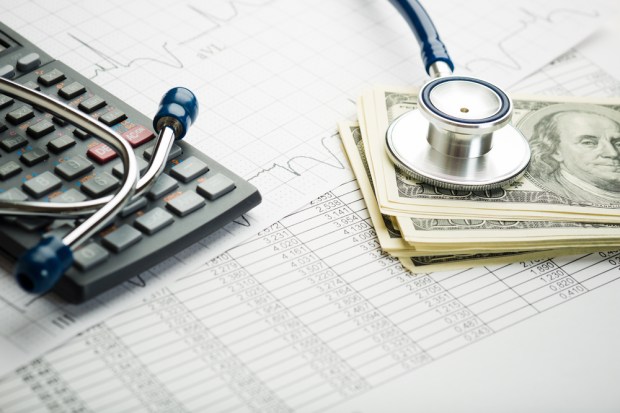The RX For Healthy Payments Processes

Amid momentous changes in healthcare, debt is on the rise, while deductibles are high. How to set in place a positive practice management payments process? Matt McCammon, general manager of Integrated Payments at TSYS, offers up a prescription for healthy cash flow.
Healthcare costs may be one of the largest bills consumers shoulder, and the burden is not getting any easier.
In delving into the intersection between providing care and paying for it, sweeping changes are extant at the macro level. These changes are impacting the way consumers receive treatment, how it’s reimbursed, tracked and even who pays for it — including how they pay, when and where, both online and off.
In an interview with PYMNTS’ Karen Webster, Matt McCammon, general manager of integrated payments at credit card processor, merchant acquirer and bank credit card issuer TSYS, recounted that healthcare is a $4 trillion market. It makes up 18 percent of the U.S.’s gross domestic product (GDP), and consumer payments are expected to be worth approximately $600 billion by 2019.
At the same time, consumers have seen debt reach $13 trillion, a record amount. Of that amount, $1 trillion is tied to auto loans with another $1 trillion wrapped up in student debt. To make matters worse, wage inflation has not kept pace with debt accumulation.
When borrowers pay the interest — and, yes, some principal — on auto and education-related debt, there are fewer discretionary dollars to spend elsewhere, which can put a pinch on pocketbooks. Healthcare economics have put a similar pinch on those pocketbooks since patients often rely on insurers to pay the bill.
Today, approximately 75 million Americans have turned to high deductible healthcare plans, the average of which is $1,500 plus limits on percentages paid for many medical procedures. As such, Americans, already stretched by debt levels, must now grapple with those higher-than-usual medical expenses, too.
If the patient cannot or will not pay, then the healthcare provider is burdened with chasing down payment.
To avoid what might be a lengthy and possibly fruitless pursuit, providers have had to alter their “talk track,” as McCammon termed it, with the acknowledgment between parties that the consumer is responsible for as much as 35 percent of the bill.
Even as reimbursement changes have shifted the payment conversation between doctors and patients, practices must also wrestle with managing data tied to those very same patients. According to McCammon, the second Bush administration made efforts through incentive programs to spur healthcare providers to switch their healthcare recordkeeping to electronic conduits. That was followed by additional outreach by the Obama administration, and approximately 70 percent of healthcare records are kept through electronic means today.
In waves of consolidation, thousands of independent practices are being acquired by hospital systems on an annual basis. The hospitals want buying power gleaned through scale, and as many as two-thirds of providers are tied to hospitals. These practices are spurred to sell due, in part, to an increasingly stiffer regulatory environment.
With so much data flowing electronically and many practices — far-flung and using separate technology platforms — coming together under one “roof,” hospitals must bridge their disparate payments system into a singular payment process flow, McCammon explained.
From the patients’ point of view, the expectation is for the payment experience to be a seamless one, just like in retail. They want to log into their accounts online through portals, and they expect to pay via phone and to have recurring payment plans, he said.
As such, the workflow is changing and must look across four buckets of consideration. The first is eligibility. Does the patient have insurance? If so, what are the terms of that policy? The second component is estimation, which involves determining how much the patient must pay for the service. The third component is the propensity or capacity of that patient to pay. Finally, there’s the actual collection of payments.
Payments technology comes into play through the practice management system at this fourth point as what “the central nervous system of the practice” resolves, according to McCammon. A wealth of data flows through that system, increasing visibility — from patient information to payments information — and initiating better decision-making.
In the past, credit card information would have been taken at a single terminal. With a signed receipt in hand, providers would then go back into the patient’s ledger and key in that transaction. The new process comes across an integrated credit card terminal, he explained, which posts automatically back to the ledger.
Providers have found it necessary to ask for payment upfront or a guarantee of that payment from the insured. They are also creating various vehicles through which they collect those payments. Consider a kiosk installed within a practice that is used for check-in, and where, if a bill is outstanding, it must be paid before proceeding with that day’s appointment. Other medical reimbursement methods include payments plans and cards on file.
For healthcare providers, the goal is getting $600 billion in spend to “turn into revenue … not bad debt.”
